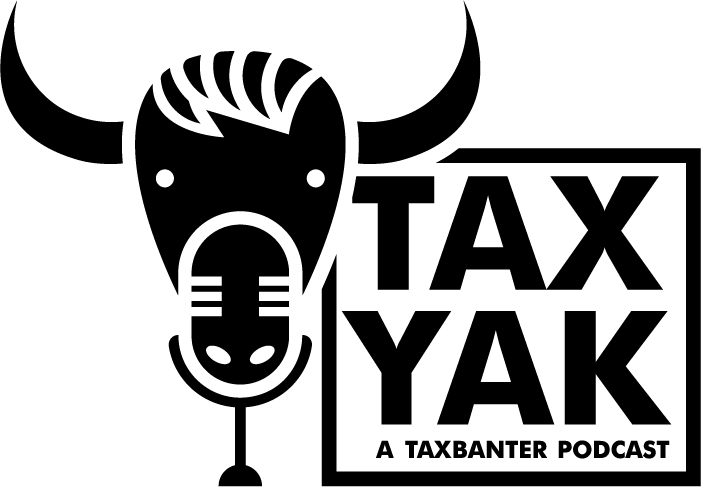[lwptoc]
On 4 December 2020, the Treasurer registered a Legislative Instrument titled the Coronavirus Economic Response Package (Payments and Benefits) Amendment Rules (No. 9) 2020 (the Amendment Rules) to set out the details of the JobMaker Hiring Credit scheme (the Scheme), which provides eligible employers with a payment of up to $200 per week in respect of each eligible employee, who works at least 20 hours per week, for a period of up to 12 months.
The Economic Recovery Package (JobMaker Hiring Credit) Amendment Act 2020, which was enacted on 13 November 2020, enables the Treasurer to make rules in relation to the Scheme. The Amendment Rules amend the Coronavirus Economic Response Package (Payments and Benefits) Rules 2020 (which also contain the JobKeeper Payment rules) to incorporate the JobMaker provisions.
 Important:
Important:
Also on 4 December 2020, the Commissioner registered a Legislative Instrument titled the JobMaker Hiring Credit Reporting Obligations Instrument 2020 which sets out what, how and when employers must report in relation to the Scheme. Our Banter Blog article JobMaker reporting obligations summarises this Instrument and the corresponding ATO guidance.
Summary of the JobMaker rules
The JobMaker periods
The JobMaker Hiring Credit will be available to eligible employers for a limited period. There will be eight ‘JobMaker periods’:

Interaction with the JobKeeper Payment scheme
The JobKeeper Payment scheme ends on 28 March 2021 and therefore it overlaps with the first two JobMaker periods.
An entity cannot participate in both the JobKeeper scheme and JobMaker scheme simultaneously. Specifically, an entity cannot participate in the JobMaker scheme if they are entitled to receive a JobKeeper payment in respect of an individual for a JobKeeper fortnight that begins during the JobMaker period.
The prohibition on JobKeeper fortnights that begin during a JobMaker period allows an entity to have a single JobKeeper fortnight end at the start of a JobMaker period. The ‘permitted’ JobKeeper fortnights are: (i) 28 September to 11 October 2020; and (ii) 4 January to 17 January 2021.
Permitting this overlap allows an entity to cease its participation in the JobKeeper scheme and begin its participation in the JobMaker scheme without requiring a ‘gap’ between the two schemes.
An entity that transitions from the JobKeeper scheme to the JobMaker scheme can employ an eligible employee during a JobMaker period for which the entity is not entitled to receive a payment under the JobMaker scheme.
The payment rates
The JobMaker Hiring Credit will be claimable at the following rates:

 Note:
Note:
The Northern Territory Government has announced, as part of its 2020–21 Budget, a supplement to the Commonwealth JobMaker Hiring Credit scheme. Eligible Territory small businesses will receive:
-
- $100 per week for eligible employees between 30 and 35 years of age;
- $200 per week for eligible employees over 35 years of age.
An eligible employee must be able to show that they were eligible for an Australian Government employment program, such as Jobseeker, Community Development Program or Jobactive, prior to 15 December 2020.
Employers can register for the scheme from 15 December 2020, and claims can be made from February 2021 on a quarterly basis. Payments will be made to eligible employers retrospectively on a quarterly basis.
Eligible employers
An employer qualifies for the payment for an ‘eligible additional employee’ (see below) in respect of a JobMaker period if it:
- carries on a business in Australia, is a non-profit body pursuing its objectives principally in Australia or is a deductible gift recipient;
- has an ABN;
- is a registered PAYG withholder;
- at claim time — has no outstanding income tax or GST returns that were due in the two years ending at the end of the period.
These conditions must be met from the time the employer notifies the Commissioner that it elects to participate in the scheme.
 Important: There is no requirement that the business must have existed or commenced by 6 October 2020 or any other date. An employer may claim JobMaker payments from the period in which it first meets all of the eligibility requirements, regardless of when the business commenced.
Important: There is no requirement that the business must have existed or commenced by 6 October 2020 or any other date. An employer may claim JobMaker payments from the period in which it first meets all of the eligibility requirements, regardless of when the business commenced.
Excluded and disqualified employers
Entities that have been subject to the major bank levy, government agencies, sovereign entities, and entities in liquidation or which have entered into bankruptcy are ineligible.
In addition, an entity is ‘disqualified’ for the Scheme for a period — and all subsequent periods — if:
- at or before the end of the period — the entity terminates an employee’s employment, or reduces their ordinary hours of work; and
- this is done, with one or more other actions, as part of a scheme for the sole or dominant purpose of the entity obtaining a JobMaker Hiring Credit payment, or increasing the amount to which the entity is eligible, for one or more periods. The ‘other actions’ may include engaging one or more eligible additional employees.
Eligible additional employees
An employer can only claim a JobMaker hiring credit for one or more eligible additional employees in respect of a JobMaker period. An eligible additional employee is an individual who meets the following criteria:

 Note:
Note:
The Explanatory Statement to the Amendment Rules state that the Scheme is targeted at younger people as they have been disproportionately impacted by the COVID-19 pandemic. While the 15 to 34 year old cohort represented around 40 per cent of those that are employed, it accounts for approximately 95 per cent of the total fall in employment between March and October 2020.
Excluded persons
The following persons are excluded from being an eligible additional employee:

Section 995-1(1) of the ITAA 1997 defines the relative of a person as the person’s spouse, the parent, grandparent, brother, sister, uncle, aunt, nephew, niece, lineal descendent or adopted child of that person, or of that person’s spouse; or the spouse of the parent, grandparent, brother, sister, uncle, aunt, nephew, niece, lineal descendent or adopted child of that person, or of that person’s spouse.
Also excluded are employees who at any time between 6 April 2020 and 6 October 2020 were engaged other than as an employee — i.e. as a contractor — where they worked in a substantially similar role or performed substantially similar functions or duties.
Requirement to increase employment
The employer must also satisfy both the ‘headcount increase’ and ‘payroll increase’ conditions to ensure that the entity creates a substantive increase in overall employment levels.
The headcount increase requirement
The employer must have a ‘headcount increase’ for the period to prevent it from replacing existing employees with new employees who are eligible for JobMaker but without creating additional employment overall.
The employer has a headcount increase for the period if the number of employees at the end of the last day of the JobMaker period exceeds the entity’s ‘baseline headcount’ for the period. This increase in employees in comparison to the baseline headcount is the ‘headcount increase amount’.
 Query — Who is included in the headcount?
Query — Who is included in the headcount?
The headcount includes all employees — full-time, part-time, casual, fixed-term and non-fixed term, regardless of whether they are eligible for JobMaker. The headcount excludes contractors and sub-contractors.
The baseline headcount
An entity’s baseline headcount for the first to the fourth JobMaker periods — i.e. from 7 October 2020 to 6 October 2021 — is the number of employees at the end of 30 September 2020.
As a very simple example, if between 30 September 2020 and the end of the relevant period an entity employs five eligible additional employees but two existing employees resign, the entity’s headcount has increased by three.
For the fifth to the eighth JobMaker periods — i.e. from 7 October 2021 to 6 October 2022 — the entity will need to increase its baseline headcount by the higher of the following:

Essentially, the headcount increase number for the periods in the second year of the scheme will be adjusted to reflect changes in headcount in the first year. The ATO will automatically calculate the adjusted baseline headcount and put it in the employer’s claim form for these periods. The ATO will provide information about how it calculates it at a future date.
 Reference
Reference
For the specific details of how to calculate an entity’s headcount increase for a particular JobMaker period, refer to:

The payroll increase
The employer must have a ‘payroll increase’ for the period. The condition is satisfied for a JobMaker period if:
total payroll amount > baseline payroll amount
The total payroll amount is the sum of the payroll amounts for each of the entity’s employees for each pay cycle that ended during the JobMaker period.
The baseline payroll amount is the sum of those amounts for a reference period that ended on or immediately before 6 October 2020 (by reference to an equivalent number of pay cycles as the number of pay cycles in the JobMaker period).
The excess of the total payroll amount over the baseline payroll amount is known as the payroll amount.
 Note:
Note:
Where a new business began after 6 October 2020, the baseline payroll amount will be zero.
Where the business only started employing employees part way through the three months up to 6 October 2020, the baseline payroll will simply include the payroll expenses. The fact that it was only part of a period does not require any adjustments to be made.

Amounts included in payroll calculations
The amounts taken into account in these calculations are:
- amounts paid by the entity to the employee by way of salary, wages, commission, bonuses or allowances;
- PAYG amounts withheld by the entity from those payments;
- salary sacrificed superannuation contributions; and
- other salary sacrificed amounts.
Payments which do not count include:
- government paid parental leave;
- workers’ compensation absence;
- reimbursement of expenses;
- directors’ fees (that are not salary and wages);
- lump sum payments (lump sum A, B, D and E);
- exempt foreign income;
- eligible termination payments;
- fringe benefits provided to an employee which are not part of an effective salary sacrifice arrangement;
- mandatory SG contributions.
Payroll includes and excludes the same items as for the wage condition for JobKeeper, although the period is worked out differently.
Payment
Calculating the payment for a period
The amount a qualifying entity may receive in relation to a JobMaker period is the lesser of the headcount amount for the period and the payroll amount for the period.
 Important:
Important:
The ATO calculates the payment amount based on the information submitted by the employer. The employer does not need to calculate it themselves.
The ATO has provided a JobMaker Hiring Credit payment estimator spreadsheet for employers to use to estimate the amount to which they are entitled.
The headcount amount for a period
The headcount amount is worked out on a daily basis and recognises periods of partial employment.
Step 1 — Multiply the higher rate days for the period by $200, divide the result by 7 and round up to the nearest cent.
Step 2 — Multiply the lower rate days for the period by $100, divide the result by 7 and round up to the nearest cent.
Step 3 — add the results from steps 1 and 2.
Reduction based on maximum payable days
Where the total counted days is equal to or less than the maximum payable days for the period, the headcount amount in a JobMaker period is the sum of:
- the amount derived by multiplying the ‘higher rate days’ for the period by $200, dividing the result by 7 (for the number of days in a week) and rounded up to the nearest cent; and
- the amount derived by multiplying the ‘lower rate days’ for the period by $100, dividing the result by 7 (for the number of days in a week) and rounded up to the nearest cent.
However, if the total counted days (sum of the higher rate days and the lower rate days) exceeds the cap imposed by the maximum payable days, the counted days are reduced to the number of maximum payable days by:
- reducing the lower rate days; then
- reducing the higher rate days.
Accordingly, it is possible for the maximum payable days to cap the total counted days for a JobMaker period to the effect that there are only higher rate days used for the calculation and no lower rate days. After applying the cap imposed by the maximum payable days, the headcount amount is worked out according to the above formula.
The 12 month limit
The rules effectively impose a 12 month limit on the length of time for which an employer can receive JobMaker payments in respect of an eligible additional employee. For the purposes of calculating the number of higher rate and lower rate days, the entity must disregard any days that the employee was employed after the employee has been continuously employed by the entity for more than 12 months. This 12 month period begins on the day the eligible additional employee last commenced employment with the entity.
The employee will continue to be an eligible additional employee until the end of the JobMaker period in which the 12 month period ends.
For example, if a new employee commenced on 10 October 2020, they will be an eligible additional employee from 10 October 2020 until 6 January 2022 (because employment commenced less than 12 months prior to the first day of that period, being 7 October 2021). However, the calculation of the headcount amount for the period from 7 October 2021 to 6 January 2022 will not include any days after 10 October 2021. The employee ceases to be an eligible additional employee for the period commencing 7 January 2022.
The payroll amount for a period
The payroll amount for a period = the entity’s baseline payroll amount for the period less the entity’s total payroll amount for the period.
ATO payment of a claim
If the employer has lodged a claim for the period and the Commissioner is satisfied that the employer is entitled to the payment, the Commissioner must pay the entity as soon as is practicable.
Where there is an overpayment that results from an individual giving a notice to more than one entity, the individual may be jointly and severally liable to pay the overpayment and any general interest charge.
Claims will be paid by the ATO from February 2021 in relation to the first period (7 October 2020 to 6 January 2021).
Eligible employers must register with the ATO.
Reporting obligations
The JobMaker reporting and other administrative obligations for employers are outlined in our Banter Blog article titled JobMaker reporting obligations.
Further info and training
Join us at the beginning of each month as we review the current tax landscape. Our monthly Online Tax Updates and Public Sessions are excellent and cost effective options to stay on top of your CPD requirements. We present these monthly online, and also offer face-to-face Public Sessions at locations across Australia. Click here to find a location near you.
Our Upcoming February Tax Update, taking place next week, will be our first Tax Update of 2021.
We can also present these Updates at your firm (or through a private online session) with content tailored to your client base – please contact us here to submit an expression of interest or visit our In-house training page for more information.












 Tailored in-house training
Tailored in-house training